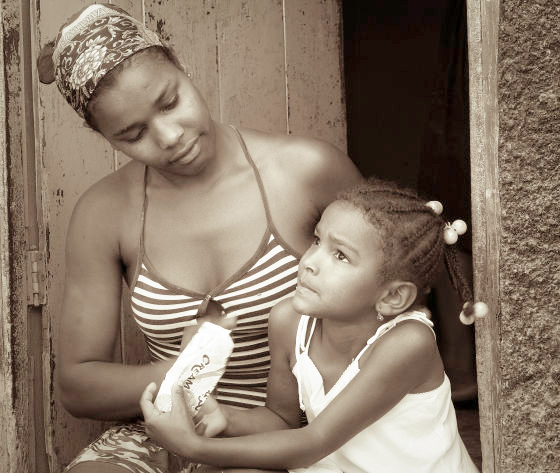Why do 6-year-old girls want to be sexy?

By
There have been many issues surrounding precocious girls, such as a 10-year-old beautiful model in France being criticized for being too sexy , and teenage students sending sexually explicit photos using their cell phones.However , a study of elementary school children in the Midwestern United States has found that many girls as young as 6 are already beginning to think of themselves as sexual objects.
Why 6-Year-Old Girls Want to Be Sexy | Self-Sexualization | LiveScience
http://www.livescience.com/21609-self-sexualization-young-girls.html
While previous research has shown that women and teenagers sexually objectify themselves, a new study, published in the journal Sex Roles, finds that young girls are the first to begin seeing themselves as sexual objects. The study also identifies factors that help girls avoid self-objectification.
Psychologists at Knox College conducted the study and used paper dolls to measure self-sexualization among girls ages 6 to 9. Sixty girls were shown two dolls: one dressed in tight, revealing, and sexy clothing, and the other in fashionable but revealing, loose-fitting clothing. They were then asked to choose one doll along with four questions: 'What I see in myself,' 'What I want to look like,' 'What is popular at school,' and 'What doll would I like to play with?' The most popular answer was the sexy doll. The results were significant in two categories: 68% of girls said they wanted to be like the sexy doll, and 72% said the sexy doll was more popular.

Researcher Christy Starr explains, 'It's entirely possible that girls choose sexy dolls because it's trendy and carries social benefits.' Other studies have also shown that sexiness is only popular among girls, not boys. While the desire to be popular isn't unique to women, the pressure to be sexy in order to be popular is unique to women.
Starr and her advisor and co-author, Gail Ferguson, discovered factors that influenced the girls' responses. Many girls were recruited from public schools, but in smaller towns, they were recruited from local dance studios. Girls recruited from dance studios were more likely to choose the less revealing, less sexy doll across four questions than girls from public schools. Sports, including dance, are associated with encouraging girls and women to value their bodies and develop a more positive body image. 'Dance can encourage girls to respect their bodies and see their bodies as something to use for purposes, not just to appear sexy to others, which can reduce self-sexualization,' they wrote. (However, past research has warned that engaging in aesthetic sports like dance can lead girls to value themselves more than others.)

By
Media consumption alone is not the only factor driving girls to choose sexy dolls; the study also found that among girls who watch a lot of TV and movies, and whose mothers worry about their clothes and appearance multiple times a day and express a tendency to sexualize themselves, sexy dolls tended to be more popular.
The authors show that media and mothers influence girls' sexualization. While mothers and media have a strong influence, girls whose mothers used television and movies as 'bad examples' were less likely to describe themselves as sexy dolls. 'The power of maternal education during media viewing seems to explain why girls' odds of choosing sexy dolls because they're popular decrease by a mysterious 7% for every hour of television or movie viewing,' Starr says. 'Maternal education about television is an important factor in protecting girls from sexualization, and even heavy media exposure can be used as education.'

By
Mothers' religious beliefs also appear to be an important factor in how girls see themselves. The authors write that even girls who watch a lot of television who have religious mothers may be more likely to protect themselves from sexual objectification by having their mothers respect their bodies and behave modestly, softening the images portrayed on television and in movies.
However, girls with religious mothers who watch little television and other media were more likely to want to portray themselves as sexy dolls. 'This pattern represents a case of 'forbidden fruit,' where girls who are overly protected from media ills by extremely religious parents begin to idealize forbidden things,' the researchers said. Another possibility is that the mothers of girls who displayed sexy attitudes and behaviors responded by limiting the amount of television and film they watched. In any case, reducing media consumption is not a panacea for girls' sexual objectification.

By Julien Lagarde
Books like 'The Lolita Effect ' and ' So Sexy So Soon ' have raised concerns about the sexualization of young girls, and Starr says her research provides empirical evidence for this trend. The American Psychological Association ( APA ) sounded the alarm about the sexualization of girls in a 2007 report, stating that the consequences of self-objectification and sexualization are primarily seen in college-age women, and range from distractibility and eating disorders to reduced condom use, with fewer women pursuing careers in math or science. Starr and her colleagues speculate that the girls had similar childhoods and early teenage years.

By
The APA report that inspired the new study makes extensive reference to the sexualization of women in popular culture. 'Subsequent research has shown that women are more sexually portrayed and objectified than men, and these are the models of femininity that girls emulate and learn from,' the APA authors write. Examples include advertisements featuring Christina Aguilera licking a candy cane in a schoolgirl outfit with her breasts unbuttoned; Bratz dolls dressed in sexy outfits like miniskirts and fishnet stockings; thong-like underwear designed for children ages 7 to 10; and television programs featuring lingerie fashion shows aimed at girls. Parents and teachers are also cited as influences on girls.

By
While recent research points to media and maternal self-objectification as contributing factors, and parents can do a lot to protect girls from a culture of sexualization, Eileen Zurbriggen, a psychology professor at the University of California and chair of the APA task force, said religious beliefs and education can have a mitigating effect.
Starr agrees, saying, 'Mothers are overwhelmed by the sexualizing messages their daughters receive from the media and feel powerless to help them. Mothers are key players in determining whether or not girls sexualize themselves. Mothers can help guide and guide girls through a sexualized world by teaching them value, rather than sexualizing and objectifying them.'
'While Starr studies the influence of mothers, as daughters tend to imitate their mothers, she also believes that fathers play a major role in how girls see themselves. She is also interested in how boys perceive sexualizing messages and how they view women through the influence of their fathers and the media. She believes that further research is needed into the issues of self-objectification and sexualization among girls.'

By Lubs Mary.
Related Posts:







